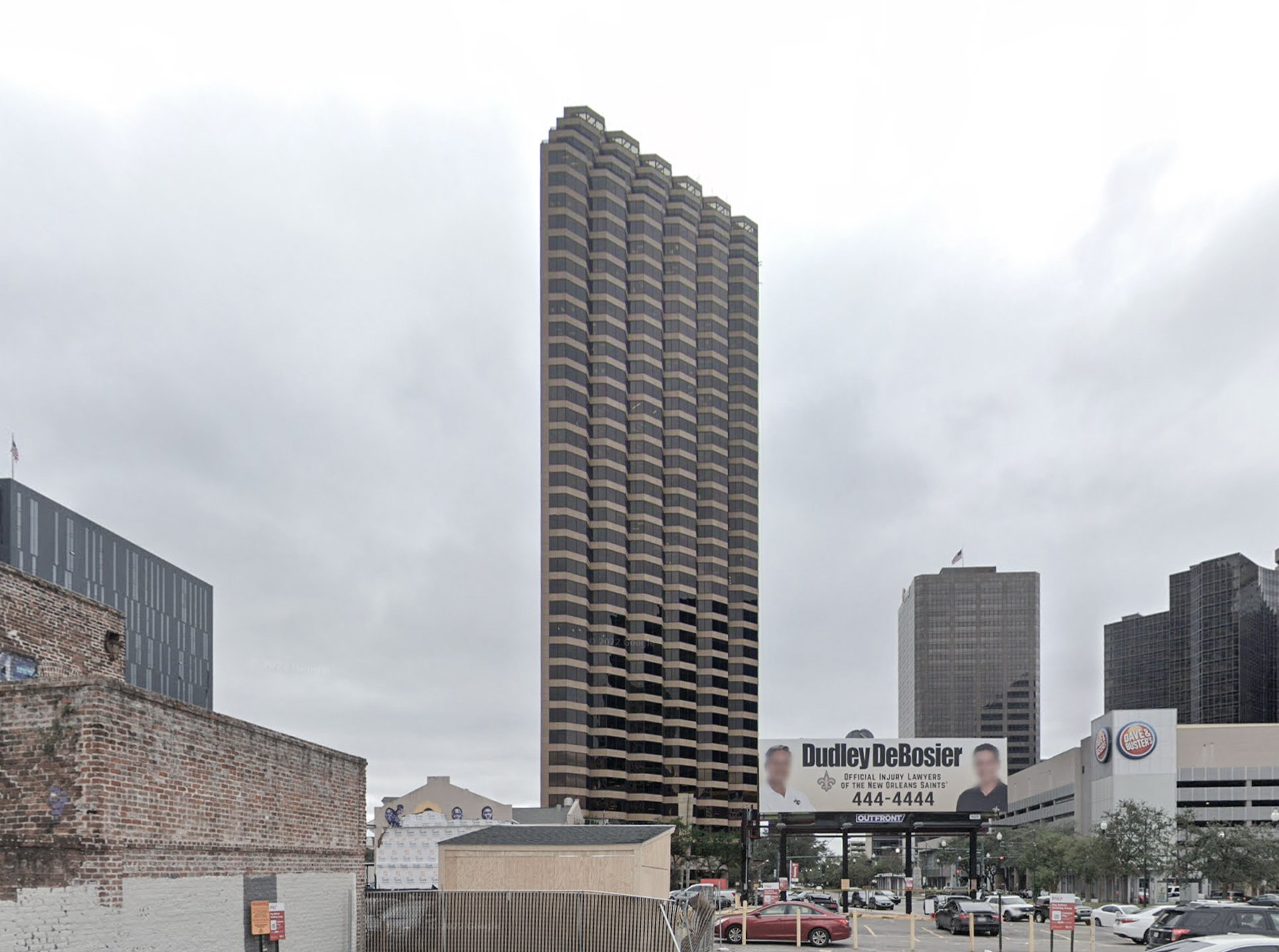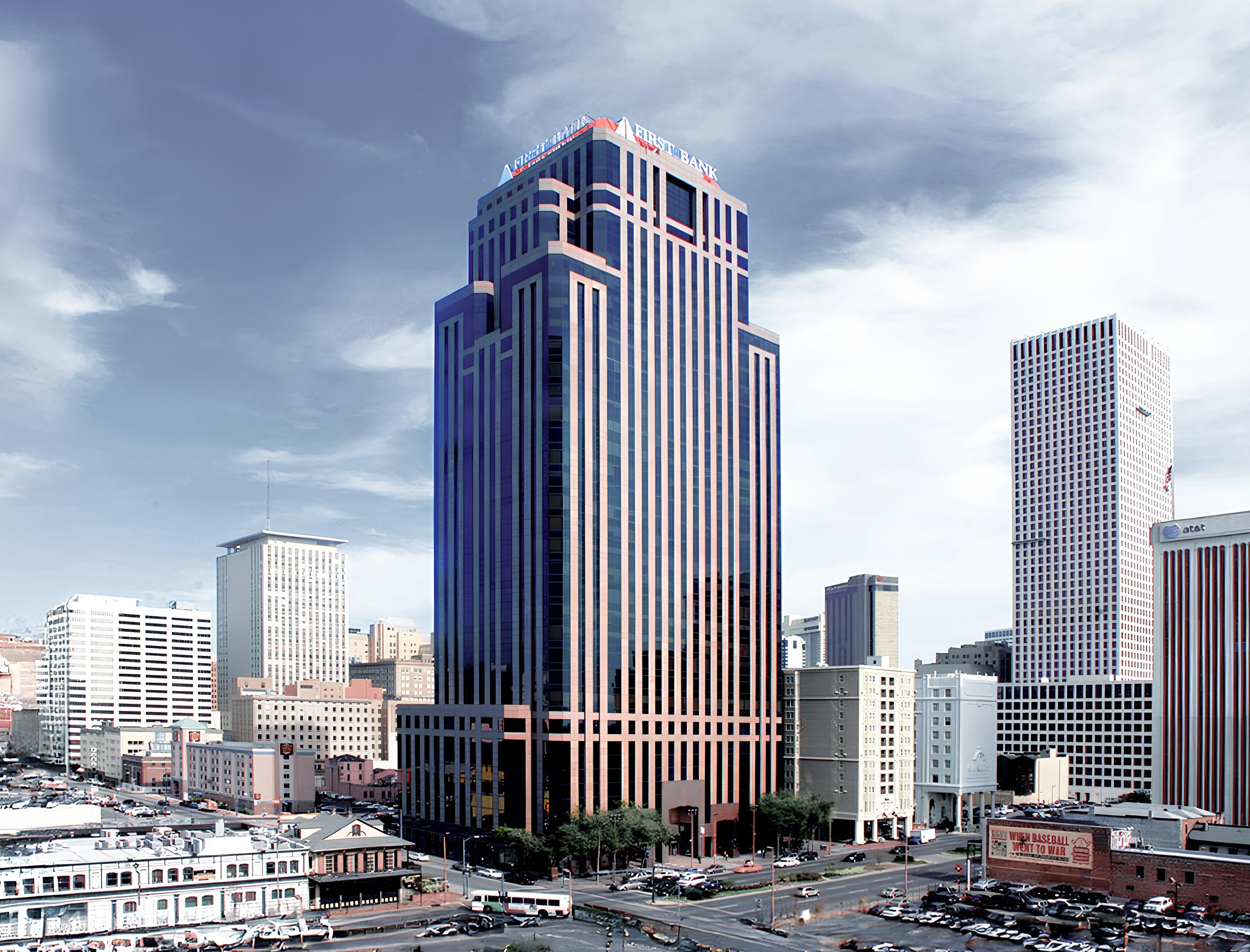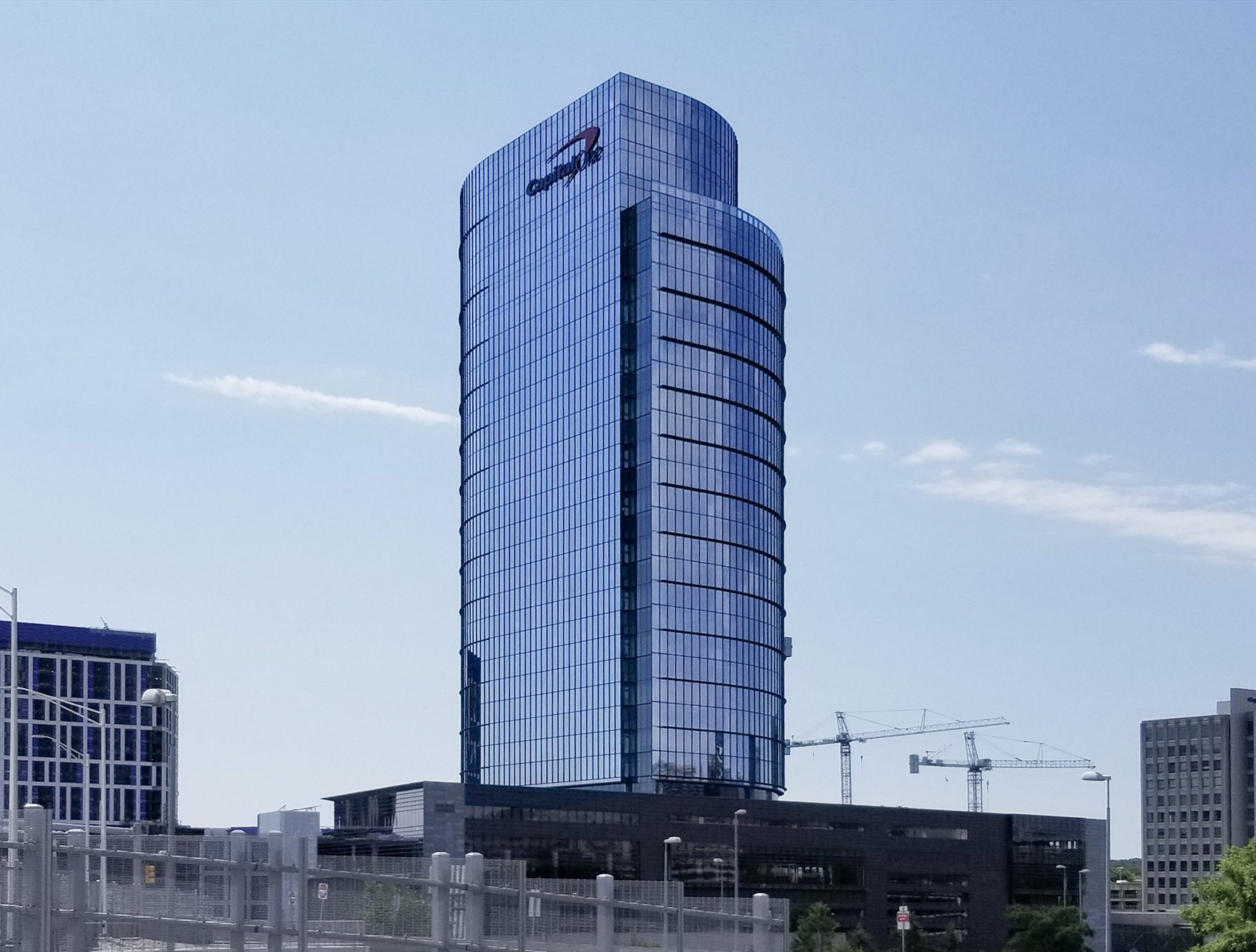The Energy Centre Building is a Postmodernist skyscraper designed by HKS Inc., and built between 1982 and 1984 in New Orleans, LA.
Its precise street address is 1100 Poydras Street, New Orleans, LA. You can also find it on the map here.
The building underwent a major restoration between 2005 and 2010. The architect commissioned to undertake this restoration was VergesRome Architects.




